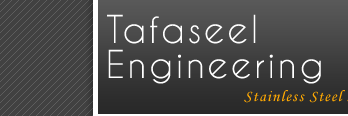
Home
About Us
Clients
Photo Gallery
Contact Us



Pharmaceutical - Stainless Steel Passivation
What is passivation? According to ASTM A380, passivation is "the removal of exogenous iron or iron compounds from the surface of stainless steel by means of a chemical dissolution, most typically by a treatment with an acid solution that will remove the surface contamination, but will not significantly affect the stainless steel itself." In addition, it also describes passivation as "the chemical treatment of stainless steel with a mild oxidant, such as a nitric acid solution, for the purpose of enhancing the spontaneous formation of the protective passive film."
In lay terms, the passivation process removes "free iron" contamination left behind on the surface of the stainless steel from machining and fabricating. These contaminants are potential corrosion sites that result in premature corrosion and ultimately result in deterioration of the component if not removed. In addition, the passivation process facilitates the formation of a thin, transparent oxide film that protects the stainless steel from selective oxidation (corrosion). So what is passivation? Is it cleaning? Is it a protective coating? It is a combination of both.
How is passivation performed? The process typically begins with a thorough cleaning cycle. It removes oils, greases, forming compounds, lubricants, coolants, cutting fluids and other undesirable organic and metallic residue left behind because of fabrication and machining processes. General degreasing and cleaning can be accomplished many ways, including vapor degreasing, solvent cleaning and alkaline soaking.
After removing organic and metallic residues, the parts are placed into the appropriate passivation solution. Although there are many variations of passivating solutions, the overwhelming choice is still the nitric-acid-based solutions. Recently, there has been substantial research performed to develop alternative processes and solutions that are more environmentally friendly, yet equally effective. Although alternative solutions containing citric acid and other types of proprietary chemistry are available, they have not been as widely accepted commercially as nitric-acid-based solutions.
The three major variables that must be considered and controlled for the passivation process selection are time, temperature and concentration. Typical immersion times are between 20 min and two hours. Typical bath temperatures range between room temperature and 160F. Nitric acid concentration in the 20 to 50% by volume range is generally specified. Many specifications include the use of sodium dichromate in the passivation solution or as a post passivation rinse to aid in the formation of a chromic oxide film. Careful solution control, including water purity, ppm of metallic impurities and chemical maintenance, are crucial for success.
The type of stainless steel determines the most effective passivation process. Bath selection (time, temperature and concentration) is a function of the type of alloy processed. A thorough knowledge of the material types and passivation processes is paramount to achieving the desired results. Conversely, improper bath and process selection and/or process control will produce unacceptable results. In extreme cases, this can lead to catastrophic failure, including extreme pitting, etching and/or total dissolution of the entire component.
Benefits of Stainless Steel Passivation Include:
- Improve corrosion resistance without plating
- Superior clean surface
- Eliminates iron contamination reactions with other materials
- No discoloration from rust
- A clean surface prepared for priming and painting




